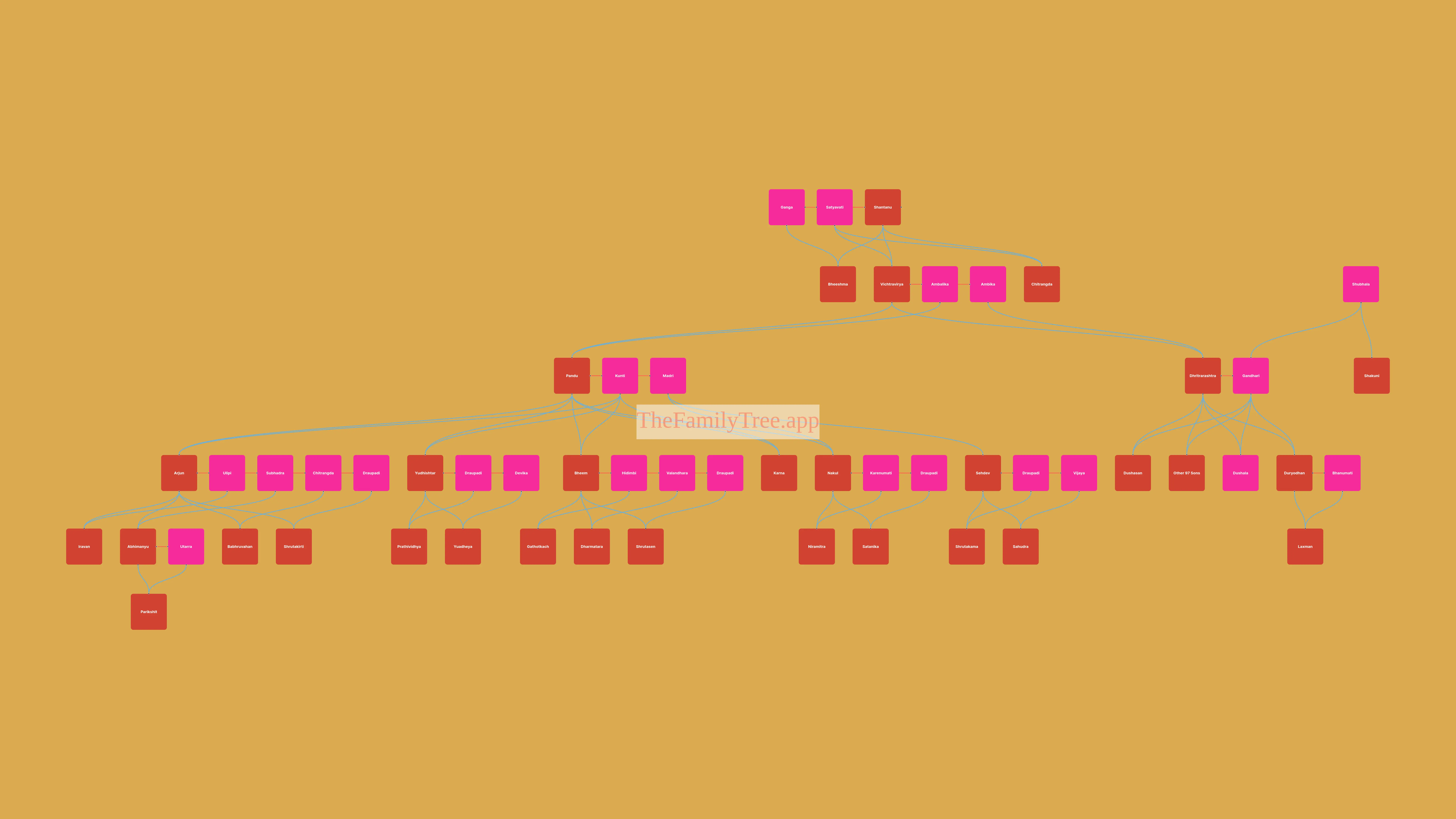Mahabharat Family

The epic of Mahabharat, one of the two major Sanskrit epics of ancient India, is an important part of Indian culture and heritage. It is believed to have been written by the sage Vyasa and is composed of 18 books of various length. The Mahabharat is a complex narrative filled with lessons of morality, philosophy, and justice. It is also a source of inspiration, providing guidance on how to live life and conduct oneself in a moral and pious manner. The epic tale has been adapted into many different forms of literature and art, and continues to be an integral part of the Indian culture. Its messages of morality, justice, and human values have been carried down through the generations, providing a source of strength and guidance for generations to come.
Mahabharat is one of the most famous Hindu epics, and the Kuru family tree is an essential part of it. The Kuru dynasty, more specifically, was the ruling family of Hastinapur and Indraprastha. The family tree of the Kuru dynasty is an intricate one, with multiple lineages and branches. It is said that the Kuru dynasty was founded by King Kuru, the great-grandson of Bhrigu, one of the seven great rishis or sages. The Kuru lineage then expands to include the Panchalas, Kurus, Yadus, and Pandavas. Each of these branches had their own distinct lineages, with intermarriages between them. The Kuru family tree is a complex one, spanning many generations and interconnecting various branches of the same family. It is an essential part of the Mahabharat and an interesting one to explore.
Building Your Family Tree with TheFamilyTree.app
Thanks to advances in technology, creating and exploring your family tree is easier than ever. Family tree-making platforms, like TheFamilyTree.app, offer easy-to-use tools that guide you through the entire process of building your family’s legacy.
Here’s how to get started:
- Gather What You Know: Start with the names and information you already have — your parents, grandparents, and great-grandparents. Ask your family members for stories and details that have been passed down.
- Use Online Tools: Platforms like TheFamilyTree.app let you input that data.
- Create and Share Your Family Tree: Once you've compiled your family history, you can create a stunning visual family tree to share with your loved ones. You might even uncover connections to famous historical figures, or like the Mahabharat, have your own unique lineage full of fascinating stories.